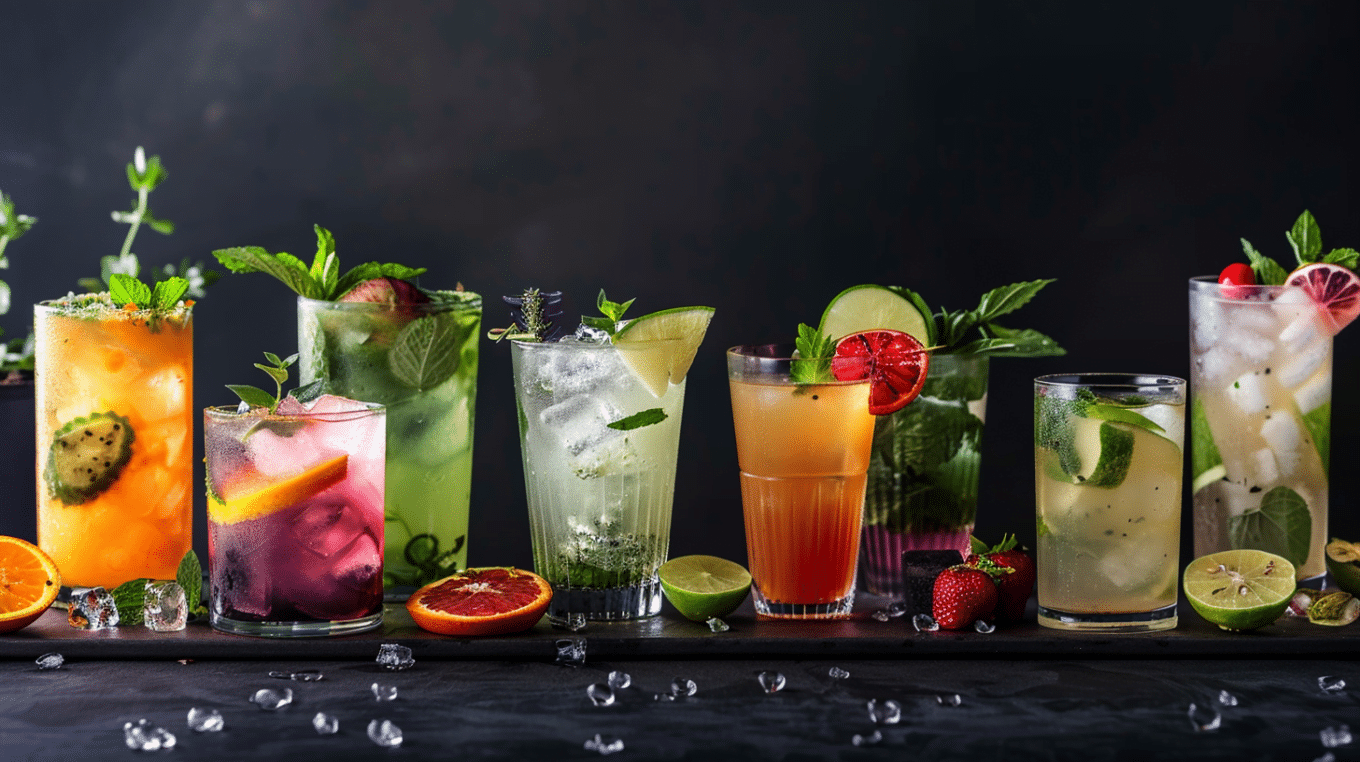Have you ever wondered why your favorite mixed drink is called a “cocktail?”
The origins of this term are as intriguing as the beverages themselves.
While the exact history remains a mystery, several theories explain how “cocktail” became the go-to name for these concoctions.
In this blog post, we’ll explore the linguistic origins of the word “cocktail,” delving into the most popular theories and tracing their evolution through history.
From misheard French words to the tales of creative bartenders, we’ll uncover the stories behind the term that has become synonymous with the art of mixing drinks.
Join us on this journey as we raise a glass to the fascinating world of cocktail etymology and discover the roots of this beloved term.
Theories Behind the Term “Cocktail”
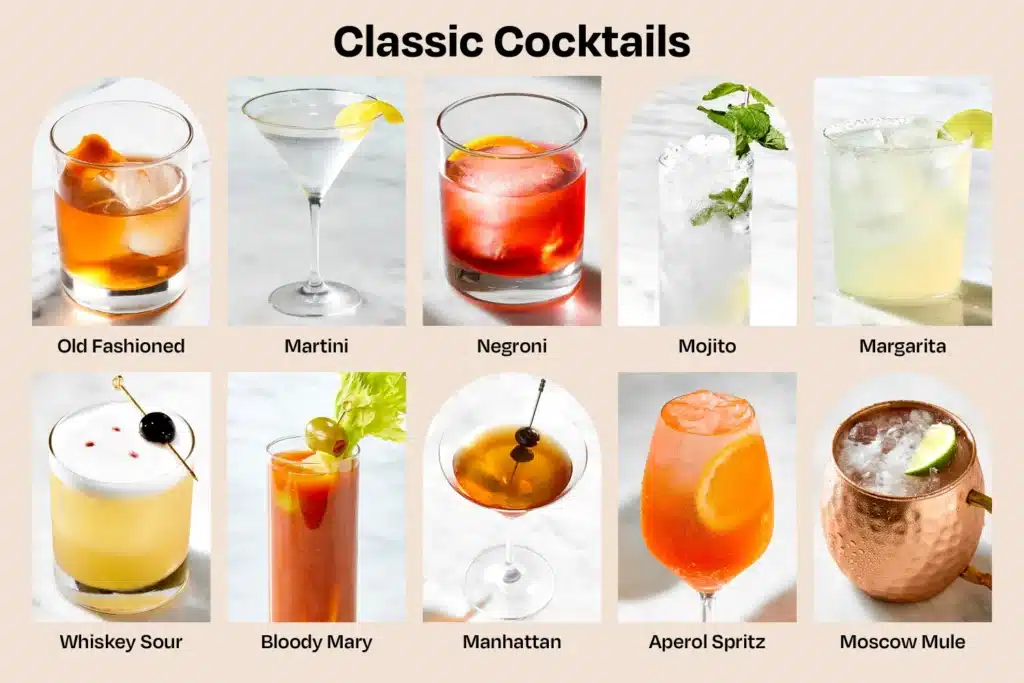
Understanding the origins of “cocktail” means exploring a rich history of cultural and linguistic influences.
This journey shows how language changes over time, shaped by various factors and contexts.
1. A Full Picture
Looking at multiple theories gives a complete view of the term’s origins.
Different ideas highlight the cultural and historical contexts that shaped the term.
2. Historical Background
Each theory offers a look at a specific time and social practices.
Knowing these contexts helps us appreciate how language and customs have evolved.
3. Cultural Importance
Different theories show the cultural exchanges that have influenced the term.
They illustrate how cultures like French, English, and Mexican have interacted.
4. Language Insights
Theories reveal how words change through mispronunciations, translations, and adaptations.
They show the linguistic journey of the term from its beginnings to how we use it today.
Theories That Made an Impact
| Theory | Description | Historical Context | Key Figures/References | Cultural Significance |
|---|---|---|---|---|
| Docked Horses Theory | The term “cocktail” described horses with docked tails, symbolizing spiritedness, similar to the effect of mixed drinks. | 18th-century equestrian practices | Common among mixed-breed horses | Highlights the energetic and lively nature of cocktails |
| Egg Cups Theory | Originating from the French word “coquetier” (eggcup), it was used by Antoine Amédée Peychaud to serve brandy with bitters. | Late 18th-century New Orleans | Antoine Amédée Peychaud | Shows cross-cultural linguistic adaptation |
| Mixed Dregs Theory | Tavern owners mixed the dregs of barrels (cock tailings) to create cheaper drinks. | Early tavern practices | Tavern owners | Reflects the resourcefulness in early mixology |
| Spices Theory | Adding spices like ginger and pepper to drinks to invigorate them, inspired by spicing racehorses to make their tails “cock” or stand up. | Historical use of spices in beverages | Inspired by racehorse practices | Indicates the use of spices to enhance flavor and energy |
| Cola de Gallo Theory | Derived from English sailors observing Mexican bartenders stirring drinks with a plant called “cola de gallo” (cock’s tail). | 19th-century cross-cultural interactions | English sailors, Mexican bartenders | Shows the influence of Mexican cocktail culture |
| Cock Ale Theory | Based on a historical beverage called “cock ale,” which included ale mixed with the meat or jelly of a boiled cock, along with other ingredients. | Historical alcoholic beverage recipes | Early mixologists | Illustrates the experimentation with ingredients in early drinks |
1. Docked Horses Theory
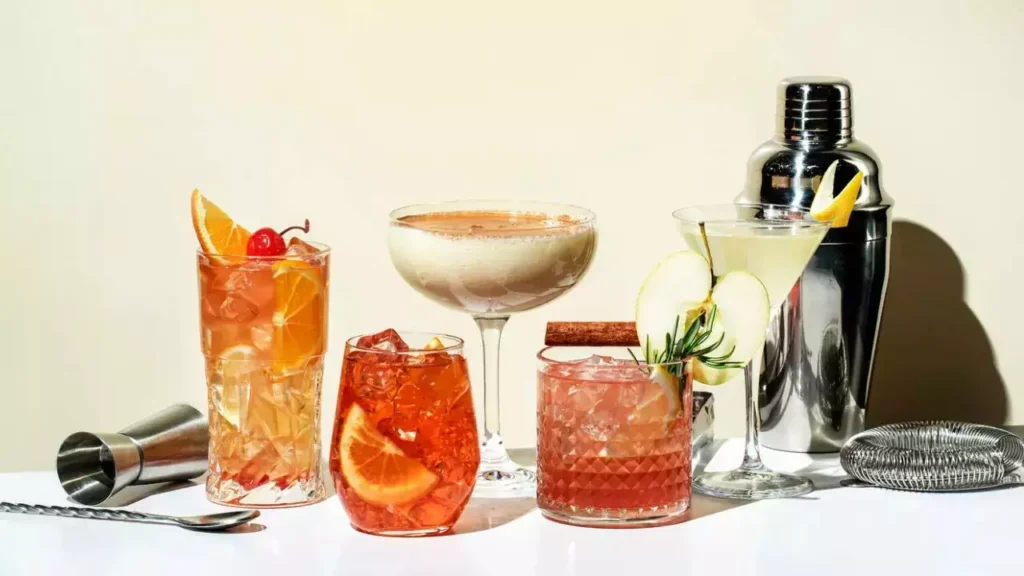
- Description: This theory suggests that “cocktail” comes from the practice of docking horses’ tails.
- Historical Context: In the 1700s, non-pedigree horses, especially those used for coaching or racing, often had their tails docked.
- Link to Spirited Drinks: The docked tails made the horses look more lively and spirited. In the same way, the term “cocktail” came to represent the energizing nature of mixed drinks.
2. Egg Cups Theory
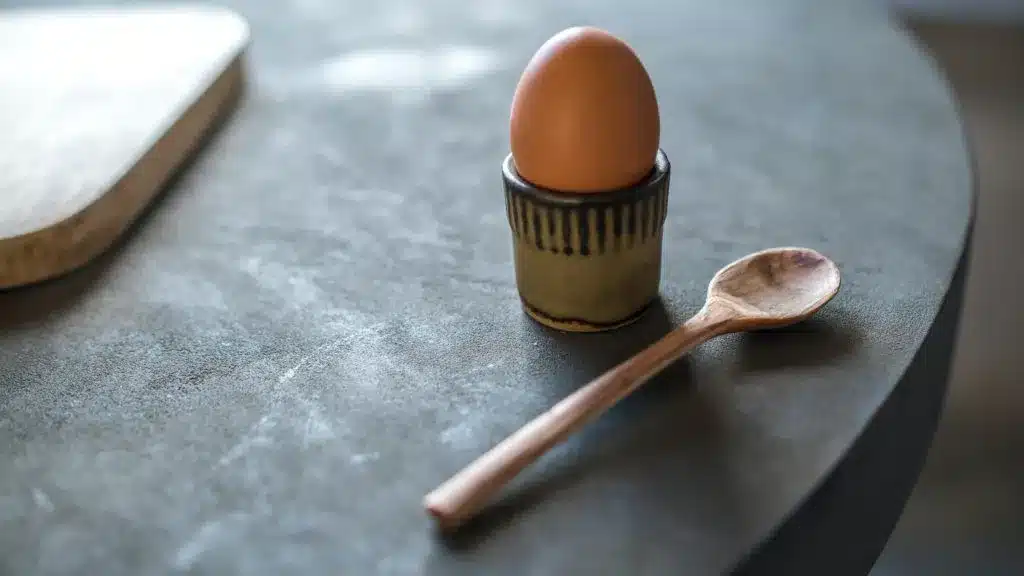
- Description: This theory says that “cocktail” mispronounces the French word “coquetier,” which means egg cup.
- Historical Figure: Antoine Amédée Peychaud, a New Orleans apothecary in the 1700s, is often linked to this origin. He served brandy with bitters in egg cups.
- Context: Peychaud’s customers, mostly English-speaking Americans, mispronounced “coquetier” as “cocktail,” making the term popular.
3. Mixed Dregs Theory

- Description: The Mixed Dregs Theory suggests that tavern owners would mix the dregs, or “tailings,” of nearly empty barrels to make a cheap drink.
- Historical Practice: This smart method allowed tavern owners to use all their inventory and offer a special, low-cost drink.
- Insight: This practice shows the creativity of early mixologists, who would mix different spirits and flavors to make something new and interesting.
4. Spices Theory
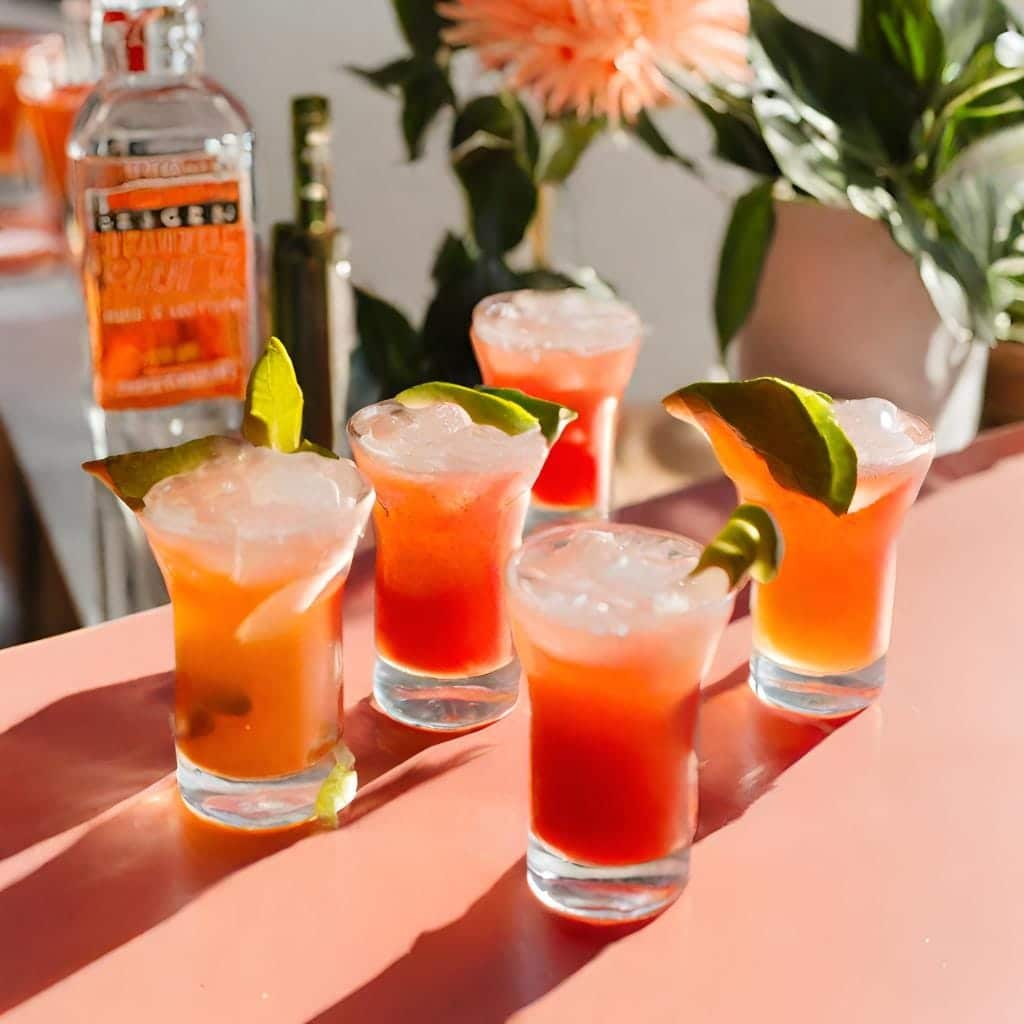
- Description: The Spices Theory says that “cocktail” comes from using spices to improve the taste and boost alcoholic drinks.
- Historical Analogy: This practice is similar to using spices to increase the energy of racehorses, making their tails raise or “cock.”
- Evolution: From these early spiced drinks, the idea grew into the complex and varied ingredients used in modern cocktails.
5. Cola de Gallo Theory

- Description: The Cola de Gallo Theory says that Mexican bartenders who stirred drinks with a plant called “cola de gallo” (cock’s tail) started the term “cocktail.”
- Cultural Exchange: English sailors saw this and used the term, bringing it into their own drinking culture.
- Context: This theory shows the cultural interactions between Mexican and English-speaking groups in the 1800s, which added to the cocktail tradition.
6. Cock Ale Theory
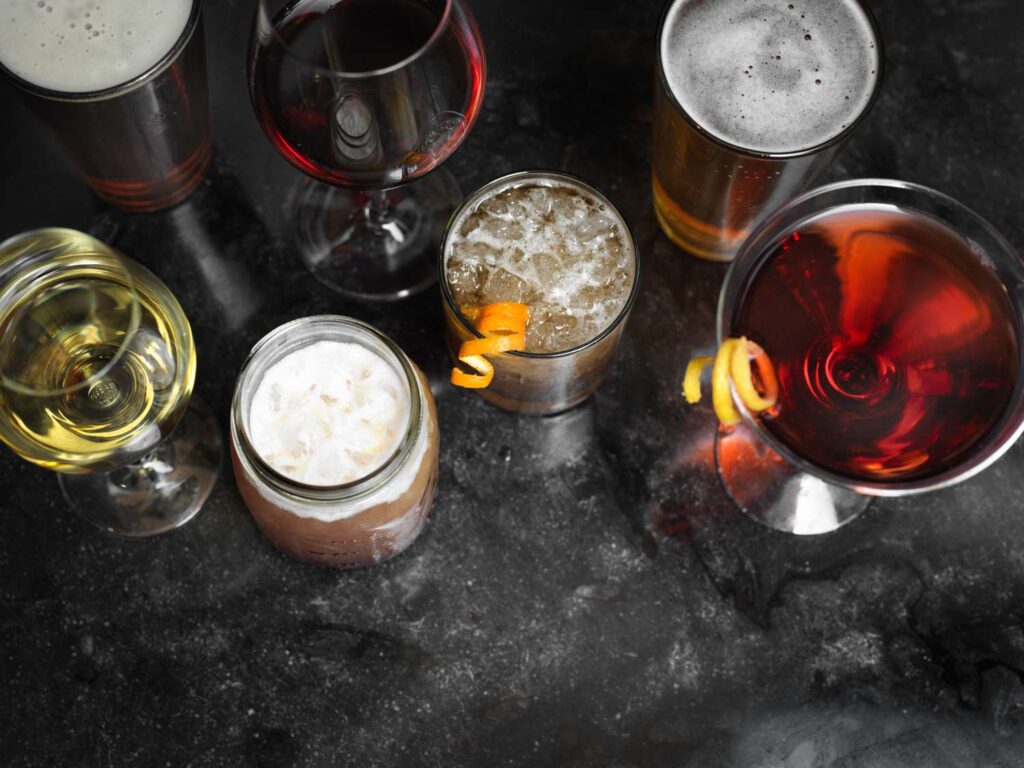
- Description: The Cock Ale Theory suggests that “cocktail” may come from “cock ale,” a drink made by mixing ale with the jelly or meat of a boiled rooster, along with other ingredients.
- Ingredients: Cock ale was a mix of ale, boiled rooster meat, fruits, and spices, showing early experiments with combining flavors.
- Creativity in Early Mixology: This theory highlights the historical creativity in mixing different ingredients to make unique drinks, a key part of mixology that continues in modern cocktail culture.
First Recorded Uses of “Cocktail”
1. Non-Alcoholic References
- “Cocktail” first showed up in non-alcoholic contexts before being linked to mixed alcoholic drinks.
- One idea suggests it came from the French word “coquette,” which was used in the 1700s to describe a glass for serving mixed drinks.
From Non-Alcoholic to Alcoholic Meanings
- “Coquetel” describes a glass, showing the word’s early link to drinkware rather than the drinks themselves.
- Over time, the word’s meaning changed, influenced by cultural and linguistic exchanges, eventually being connected to mixed alcoholic drinks.
- This change shows how language can evolve to include broader or different ideas based on societal changes and practices.
2. Alcoholic Beverage References
First Known Alcoholic References in the Early 1800s
- “Cocktail” was first seen in the context of alcoholic drinks in the early 1800s.
- One of the earliest recorded uses was in an 1806 American newspaper, the Balance and Columbian Repository, which called a cocktail a “stimulating liquor made of spirits of any kind, sugar, water, and bitters.”
Definition and Components
- This early definition showed the basic parts of a cocktail: spirits, sugar, water, and bitters, which are still key to many classic cocktail recipes today.
- Including lemon juice in some early definitions further shows the focus on balancing flavors and improving the drinking experience.
Changes in the Term Over Time
- “Cocktail” has changed greatly from its early definitions to how we use it today.
- At first, it meant a specific type of mixed drink with a set combination of ingredients. Still, over time, it has come to represent a wide category of mixed alcoholic beverages.
- This change reflects developments in mixology practices, new ingredients, and the global spread of cocktail culture.
- Understanding these early references gives valuable insight into cocktails’ historical and cultural development, offering a richer appreciation of their importance in social and culinary contexts.
Modern Understanding of the Term “Cocktail”
Today, “cocktail” refers to a mixed alcoholic beverage that typically includes one or more types of spirits combined with other ingredients like sugar, water, bitters, and various flavorings.
The modern cocktail is often associated with creativity and artistry in mixology.
Common Usage
- Cocktails are enjoyed in various settings, from upscale bars and restaurants to casual gatherings.
- They are known for their versatility, ranging from simple, two-ingredient mixtures to elaborate creations with multiple components.
Examples
- Martini: A classic cocktail made with gin and vermouth, garnished with an olive or a lemon twist.
- Old Fashioned: One of the oldest known cocktails, typically made with bourbon or rye whiskey, sugar, water, and bitters.
- Modern Creations: Contemporary cocktails often include innovative ingredients like infusions, exotic fruits, and house-made syrups.
Cultural Influences and Historical Events Shaping the Term “Cocktail”
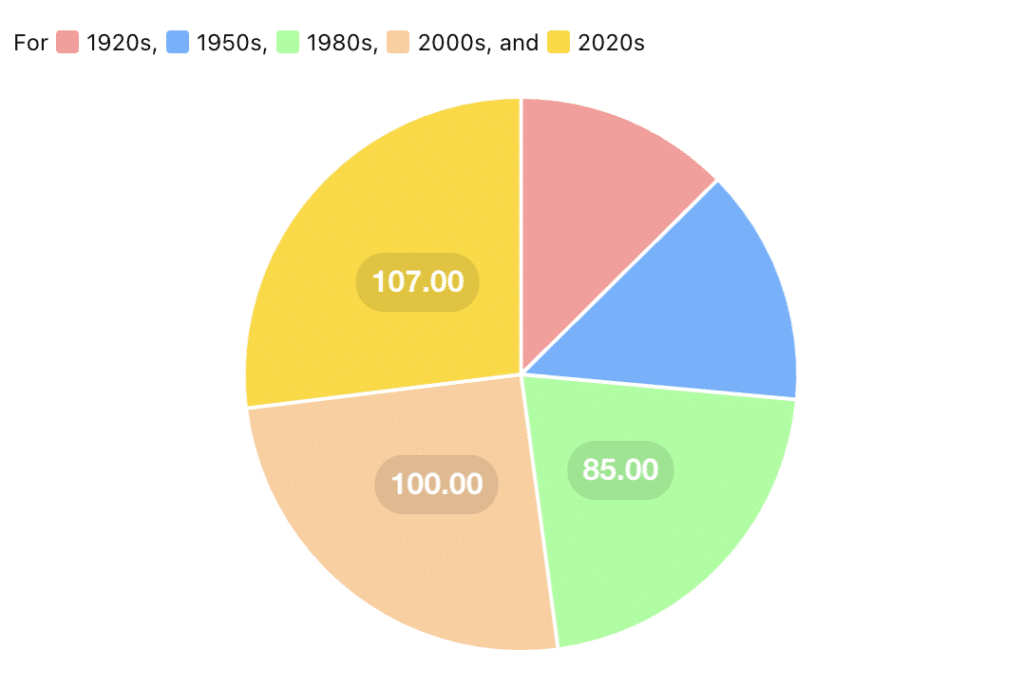
1. 19th Century
The cocktail became popular in American and British bars during the 19th century, often seen as a sophisticated and fashionable drink.
Prohibition Era (1920-1933)
- Illegal bars, known as speakeasies, flourished, leading to the rise of cocktail culture in the United States.
- Bartenders had to be creative with limited resources, giving birth to many classic cocktails.
Post-Prohibition
- Evolution: After Prohibition, the cocktail culture continued to evolve, spreading globally and incorporating influences from different cultures.
2. Influence of Literature and Media
- Cocktails have been glamorized in literature and films, contributing to their cultural significance.
- Iconic characters like James Bond with his “shaken, not stirred” Martini helped popularize specific cocktails.
3. Impact of Global Events
- World Wars: The global conflict and subsequent periods of economic change influenced drinking habits and the availability of ingredients.
- Cultural Exchanges: Increased travel and cultural exchanges have introduced new ingredients and techniques to cocktails.
4. Changes in the Definition Over Centuries
- The earliest known definition of a cocktail, from an 1806 publication, described it as a stimulating liquor composed of spirits, sugar, water, and bitters.
5. Evolution of Ingredients
- New Additions: Over time, the definition expanded to include various ingredients, such as citrus juices, syrups, and liqueurs.
- This allowed for greater creativity and diversity in cocktail recipes.
6. Expansion of Types
- Variety: The range of cocktails has grown significantly, from simple highballs and sours to complex and layered drinks with multiple components.
7. Shift in Perception
- Medicinal to Social: Initially, cocktails were often seen as medicinal or practical drinks. Over the years, they have become symbols of sophistication, social status, and culinary art.
Conclusion
The fascinating origins of the term “cocktail” offer a glimpse into the cultural exchanges and historical influences shaping the world of mixed drinks.
From the creative ingenuity of early mixologists to the global impact of cocktail culture, the journey of this beloved term is a testament to the enduring appeal of these crafted concoctions.
As we raise a glass to the colorful history of cocktails, it’s clear that their significance extends far beyond the bar.
Cocktails have become a symbol of social connection, a source of inspiration for artists and writers, and a reflection of our ever-evolving tastes and traditions.
So, the next time you savor a skillfully mixed drink, take a moment to appreciate the fascinating story behind its name.
Frequently Asked Questions
What Are the Main Theories Regarding the Origin of The Term “Cocktail”?
The main theories include the Docked Horses, Egg Cups, Mixed Dregs, Spices, Cola de Gallo, and Cock Ale theories, each offering unique historical insights.
How Did the Ingredients and Techniques Used in Cocktails Evolve?
Cocktail ingredients and techniques evolved from simple combinations of spirits, sugar, water, and bitters to complex recipes incorporating various liqueurs, syrups, and innovative mixing methods.
What Role Have Cocktails Played in Shaping Social Customs and Popular Culture?
Cocktails have been integral to social gatherings, celebrations, and rituals and are prominently featured in movies, literature, and other forms of media.
How Have Different Cultures Influenced the Development and Popularity of Cocktails?
Different cultures have contributed unique ingredients, flavors, and traditions to cocktail making, resulting in diverse recipes reflecting global cultural exchanges.
What Are Some Modern Innovations and Trends in Cocktail Mixology?
Modern mixology innovations include experimenting with new ingredients, techniques, and presentation styles, revitalizing classic cocktails, and leveraging social media to influence global cocktail trends.

